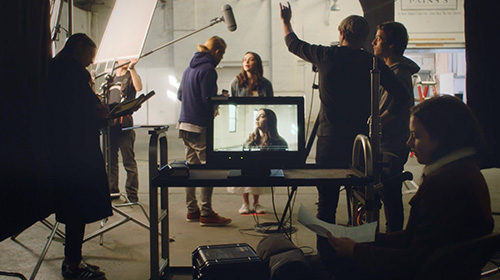
Casting is an integral part of media production, and it plays a crucial role in determining the success of a project. Casting refers to the process of selecting actors, performers, and other professionals for media production. It involves identifying suitable talent and evaluating their skills and abilities to ensure that they are a good fit for the project’s requirements. In this article, we will discuss the casting process in media production in more detail, including the different types of casting, the key considerations in the process, and the role of technology in casting.
The casting process typically starts with a casting director, who is responsible for finding the right actors for the roles. The director will work closely with the producer and the writer to understand the vision of the production and the specific requirements for each role. Based on this information, the casting director will create a list of potential candidates and start the audition process.
Auditions are usually held in a casting studio or on location, and actors are typically given sides, which are pages from the script that include the lines for the character they are auditioning for. During the audition, the actor will perform the scene and may be given directions or asked to try the scene in a different way. Callbacks are follow-up auditions for the actors who the director thinks may be right for the role. The actor may be asked to read additional scenes or work with other actors to see how they interact with each other.

Types of Casting:
There are several types of casting, and the choice of casting method will depend on the requirements of the project. The most common types of casting include:
Open Casting: In this type of casting, anyone who meets the eligibility criteria can audition for the role. Open casting is typically used for projects that require a large number of actors or for roles that do not have specific requirements.
Closed Casting: Closed casting is the opposite of open casting. In this type of casting, only selected individuals are invited to audition for the role. Closed casting is used when the project requires specific skills or qualities that are not easily found in open casting.
Self-Taping: Self-taping is becoming increasingly popular, especially in the age of the pandemic. In this type of casting, actors record and submit their auditions digitally, usually via video. Self-taping is convenient for actors and saves time for casting directors.
Online Casting: Online casting is another type of casting that has become more popular in recent years. Online casting involves the use of online platforms to find and audition actors for a project. This type of casting is convenient for both actors and casting directors, as it saves time and eliminates the need for in-person auditions.
Key Considerations in Casting:
Casting is a complex process that involves several key considerations. These considerations include:
Talent: The most important consideration in casting is talent. Casting directors need to find actors who can bring the characters to life and deliver the required performance.
Chemistry: Chemistry between actors is also important, especially in projects that require romantic relationships or close friendships between characters.
Diversity: Diversity is a critical consideration in casting, especially in today’s world. Casting directors need to ensure that the cast represents a diverse range of cultures, ethnicities, and backgrounds.
Availability: Availability is another critical consideration in casting. Casting directors need to find actors who are available to work on the project and can commit to the production schedule.
Budget: The budget is another consideration in casting. Casting directors need to find talented actors who are within the project’s budget
